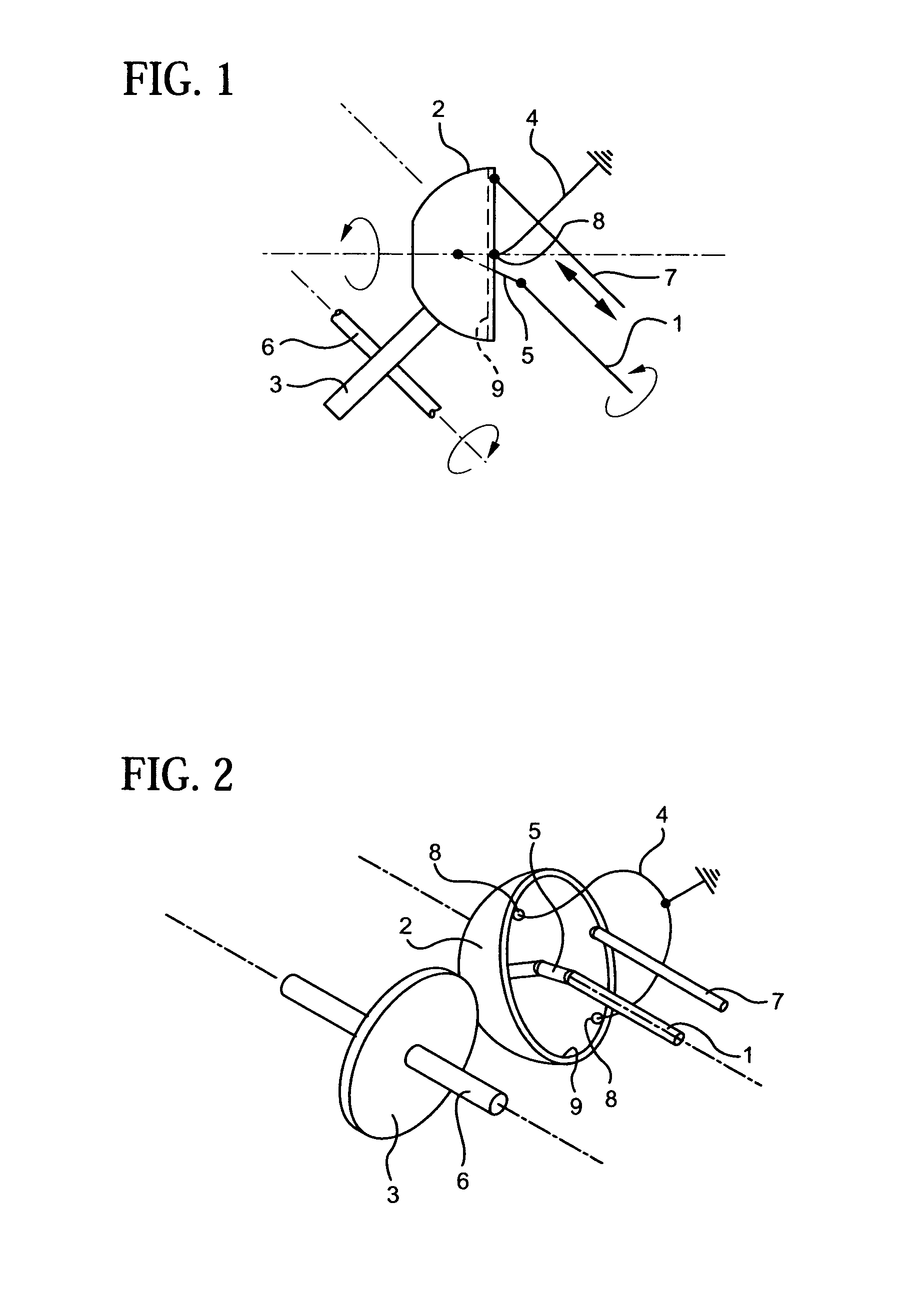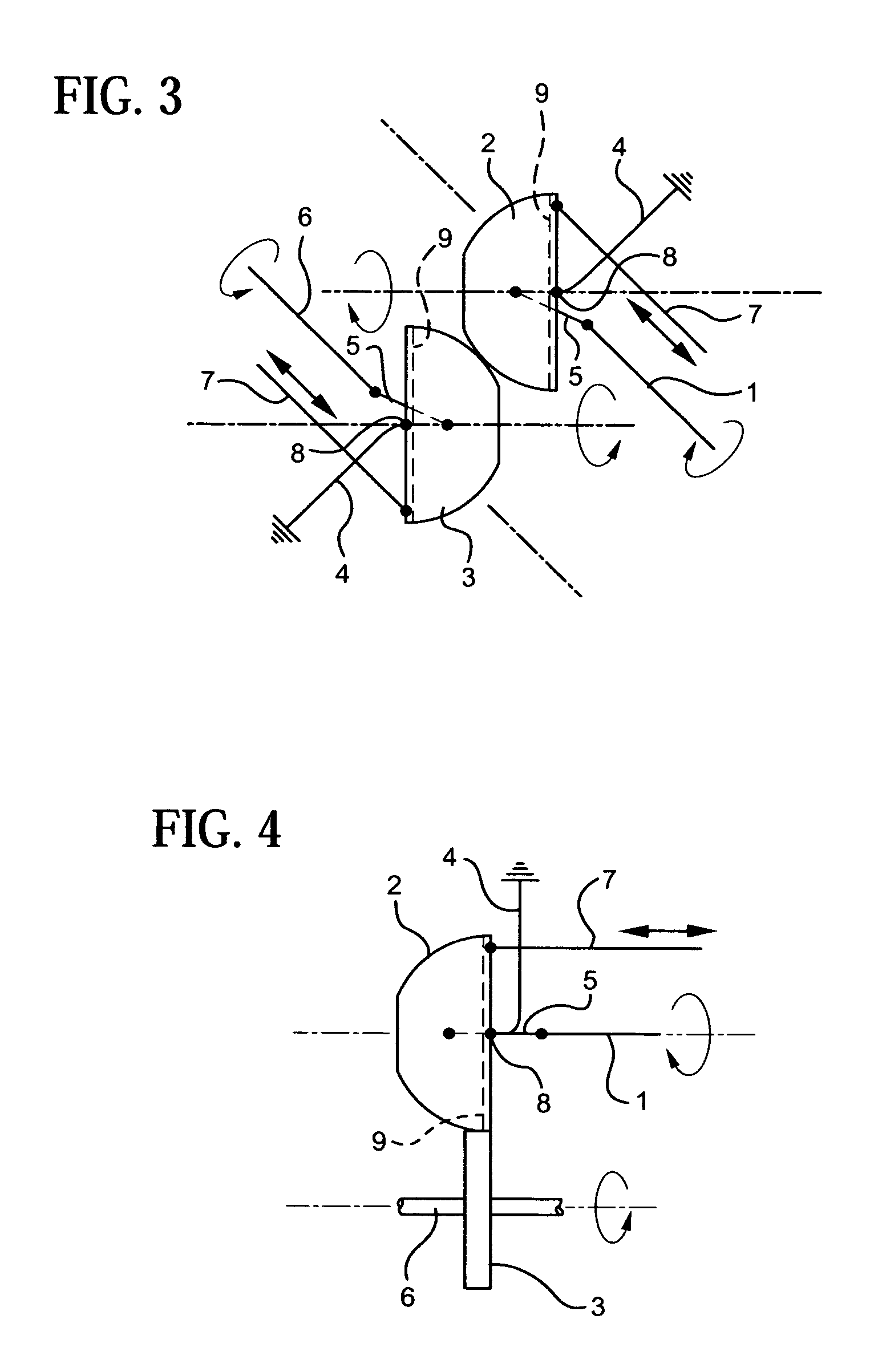Continuously variable mechanical transmission
a mechanical transmission and continuously variable technology, applied in the direction of gearing, gearing elements, hoisting equipment, etc., can solve the problems of large number of gear changes required for efficient operation, transmissions that do not have high efficiency or smooth operation, and cannot automatically change the speed ratio without manually changing gears, etc., to achieve convenient and economic production, simple in principle, and convenient in operation
- Summary
- Abstract
- Description
- Claims
- Application Information
AI Technical Summary
Benefits of technology
Problems solved by technology
Method used
Image
Examples
Embodiment Construction
[0022]Referring to the FIG. 1, there is shown a first embodiment of the continuously variable mechanical transmission where input shaft 1 is connected to the hemisphere wheel 2 through a single or double universal joint 5 (FIG. 8 showing a single universal joint), flexible shaft or a similar constant velocity device. The hemisphere wheel is rotating on the bearing 9, the inner race of the bearing having two pivot points 8, attached to the mounting fork 4. The fork is fixed to the housing of the transmission (not shown). The fork 4 can be attached directly to the hemisphere wheel or, as well known in the art can have an intermediate member connecting the fork to the hemisphere wheel. The bearing 9 is located at the major diameter of the hemisphere wheel. However, as is well known in the art, the bearing can be in a number of places on the hemisphere wheel and is only a matter of design.
[0023]The control lever 7 determines the angle between the hemisphere wheel and the input shaft. Th...
PUM
 Login to View More
Login to View More Abstract
Description
Claims
Application Information
 Login to View More
Login to View More - R&D
- Intellectual Property
- Life Sciences
- Materials
- Tech Scout
- Unparalleled Data Quality
- Higher Quality Content
- 60% Fewer Hallucinations
Browse by: Latest US Patents, China's latest patents, Technical Efficacy Thesaurus, Application Domain, Technology Topic, Popular Technical Reports.
© 2025 PatSnap. All rights reserved.Legal|Privacy policy|Modern Slavery Act Transparency Statement|Sitemap|About US| Contact US: help@patsnap.com



